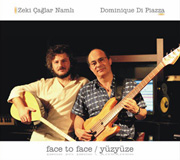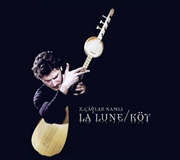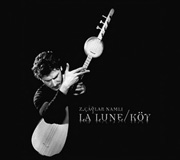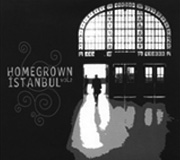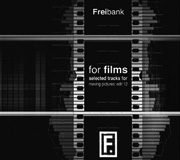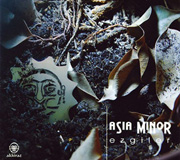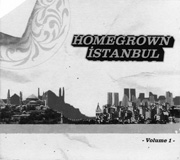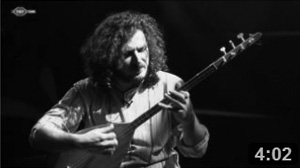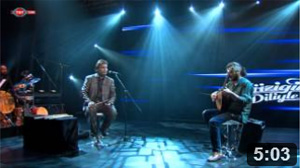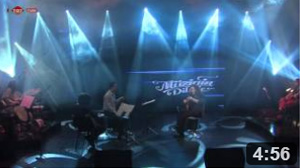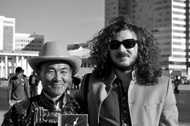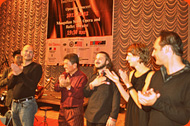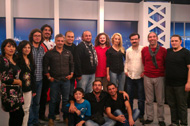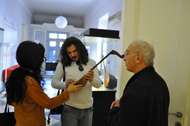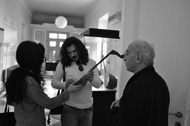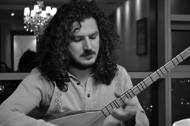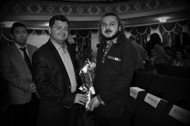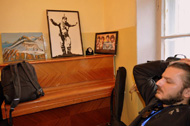ZEKİ ÇAĞLAR NAMLI
Zeki Çağlar Namlı was born in 1981 in Trabzon. Having started music when he was 8 years old, Namlı switched to bağlama when he was 14. Although he didn't receive an intensive bağlama education, he was able to play traditional and new techniques very skillfully in an unusual way. In the same year, he started State Turkish Music Conservatory.

 In these years he rediscovered and redefined bağlama. This discovery led to a new music style, which ranges from jazz to world music in addition to a new tone color and technique.
In these years he rediscovered and redefined bağlama. This discovery led to a new music style, which ranges from jazz to world music in addition to a new tone color and technique.
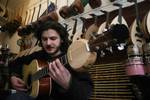
 According to Namlı, the music was a unified whole. With this style, which was developed in those years, he composed lots of compositions, made arrangements and gave many concerts.
According to Namlı, the music was a unified whole. With this style, which was developed in those years, he composed lots of compositions, made arrangements and gave many concerts.

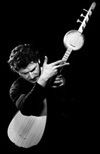 The natural stereo invention for the string instruments,which he had started in 2000 was completed in 2002 and Namlı took the patent of this invention. With this system, which he applied on two instruments, Stereo Bağlama and Stereo Guitar, the instruments can be heard as stereo naturally, played reciprocally, the musical octave expands and a new playing and instrumental music technique has emerged.
The natural stereo invention for the string instruments,which he had started in 2000 was completed in 2002 and Namlı took the patent of this invention. With this system, which he applied on two instruments, Stereo Bağlama and Stereo Guitar, the instruments can be heard as stereo naturally, played reciprocally, the musical octave expands and a new playing and instrumental music technique has emerged.

 His first album, "La Lune," which consists mostly of his own instrumental compositions was released in 2006. While the compositions in these albums started to be played in many international radio, and the natural stereo bağlama, he used in one of his compositions was categorized under the innovative instrument catalogues in various fields. In these years he accompanied the albums and concerts of many artists, he took part in short term joint works. Most of these Works have been included to the completion albums.
His first album, "La Lune," which consists mostly of his own instrumental compositions was released in 2006. While the compositions in these albums started to be played in many international radio, and the natural stereo bağlama, he used in one of his compositions was categorized under the innovative instrument catalogues in various fields. In these years he accompanied the albums and concerts of many artists, he took part in short term joint works. Most of these Works have been included to the completion albums.

 One of these is the composition called "Senden Sonra (Since You've Been Gone) in the beginning of the album "Homegrown İstanbul." In 2007, in order to reinforce the relationship between popular music audience and instrumental music, he found a television programme concept and a concert format called "Müziğin Diliyle"(With The Language of Music) and started the demo shootings at the end of 2008. In this format, musicians interpret the images in front of them with improvization music.
One of these is the composition called "Senden Sonra (Since You've Been Gone) in the beginning of the album "Homegrown İstanbul." In 2007, in order to reinforce the relationship between popular music audience and instrumental music, he found a television programme concept and a concert format called "Müziğin Diliyle"(With The Language of Music) and started the demo shootings at the end of 2008. In this format, musicians interpret the images in front of them with improvization music.

 In 2010, he released the duet album with Dominique Di Piazza, a remarkable name in the world of bass guitar.
In 2010, he released the duet album with Dominique Di Piazza, a remarkable name in the world of bass guitar.
In 2012, the programme "Müziğin Diliyle," (With The Language of Music) the concept of which was developed by him, started to be broadcasted. Namlı was not only a musician, but also the presenter of the programme. He interpreted the issues related to life, music and world-wide popular problems with almost fifty guests from all around the world. Until now, he has made a considerable effort for improving the sound potential, music and the technique of the instrument he plays and he is still in progress…












In 2012, the programme "Müziğin Diliyle," (With The Language of Music) the concept of which was developed by him, started to be broadcasted. Namlı was not only a musician, but also the presenter of the programme. He interpreted the issues related to life, music and world-wide popular problems with almost fifty guests from all around the world. Until now, he has made a considerable effort for improving the sound potential, music and the technique of the instrument he plays and he is still in progress…

